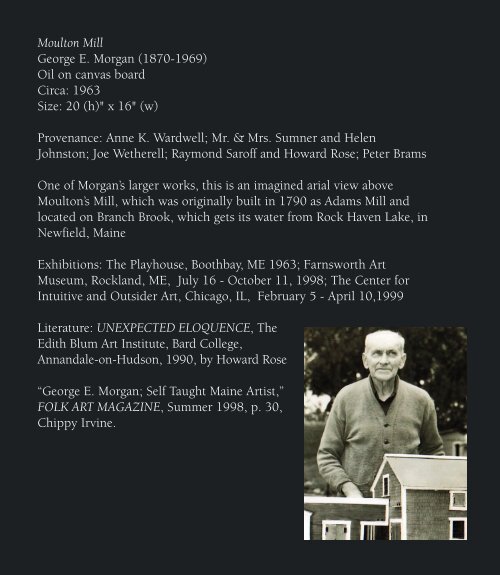Shut The Door And Listen From Outside
Steven S. Powers / Winter 2020 Catalog "Shut The Door And Listen From Outside" is a statement from Oblique Strategies, which is a set of cards each with a suggestion, directive, or constraint created by the artists Brian Eno and Peter Schmidt to encourage lateral thinking and to break creative blocks. With this in mind, as an art dealer or collector, one may think, how will this look if I see it indirectly? From a room away? Through a window? Obscured through a crowd of people? Or as I quickly scroll through Instagram? This question is not a shallow proposition—we often see a particular artwork from an off-angle or perspective—not in optimal presentation. Indeed, if we think about it, we likely first approached an artwork we came to love because it looked good "from outside." It had something special going on from a small section we gleaned through a crowd of people, or the composition came into focus as we came towards it from another room. As an artist, we may interpret this as another way of seeing. To purposely not see clearly or overtly—to create something anew based on partial information or hazy suggestions seen or heard. Or another way to look at a work in progress. View it from the side, across the room, or without glasses to see a fuzzy tonal map—does it still work for you?
Steven S. Powers / Winter 2020 Catalog
"Shut The Door And Listen From Outside" is a statement from Oblique Strategies, which is a set of cards each with a suggestion, directive, or constraint created by the artists Brian Eno and Peter Schmidt to encourage lateral thinking and to break creative blocks.
With this in mind, as an art dealer or collector, one may think, how will this look if I see it indirectly? From a room away? Through a window? Obscured through a crowd of people? Or as I quickly scroll through Instagram? This question is not a shallow proposition—we often see a particular artwork from an off-angle or perspective—not in optimal presentation. Indeed, if we think about it, we likely first approached an artwork we came to love because it looked good "from outside." It had something special going on from a small section we gleaned through a crowd of people, or the composition came into focus as we came towards it from another room.
As an artist, we may interpret this as another way of seeing. To purposely not see clearly or overtly—to create something anew based on partial information or hazy suggestions seen or heard. Or another way to look at a work in progress. View it from the side, across the room, or without glasses to see a fuzzy tonal map—does it still work for you?
Create successful ePaper yourself
Turn your PDF publications into a flip-book with our unique Google optimized e-Paper software.
Moulton Mill<br />
George E. Morgan (1870-1969)<br />
Oil on canvas board<br />
Circa: 1963<br />
Size: 20 (h)" x 16" (w)<br />
Provenance: Anne K. Wardwell; Mr. & Mrs. Sumner and Helen<br />
Johnston; Joe Wetherell; Raymond Saroff and Howard Rose; Peter Brams<br />
One of Morgan’s larger works, this is an imagined arial view above<br />
Moulton’s Mill, which was originally built in 1790 as Adams Mill and<br />
located on Branch Brook, which gets its water from Rock Haven Lake, in<br />
Newfield, Maine<br />
Exhibitions: <strong>The</strong> Playhouse, Boothbay, ME 1963; Farnsworth Art<br />
Museum, Rockland, ME, July 16 - October 11, 1998; <strong>The</strong> Center for<br />
Intuitive and <strong>Outside</strong>r Art, Chicago, IL, February 5 - April 10,1999<br />
Literature: UNEXPECTED ELOQUENCE, <strong>The</strong><br />
Edith Blum Art Institute, Bard College,<br />
Annandale-on-Hudson, 1990, by Howard Rose<br />
“George E. Morgan; Self Taught Maine Artist,”<br />
FOLK ART MAGAZINE, Summer 1998, p. 30,<br />
Chippy Irvine.


